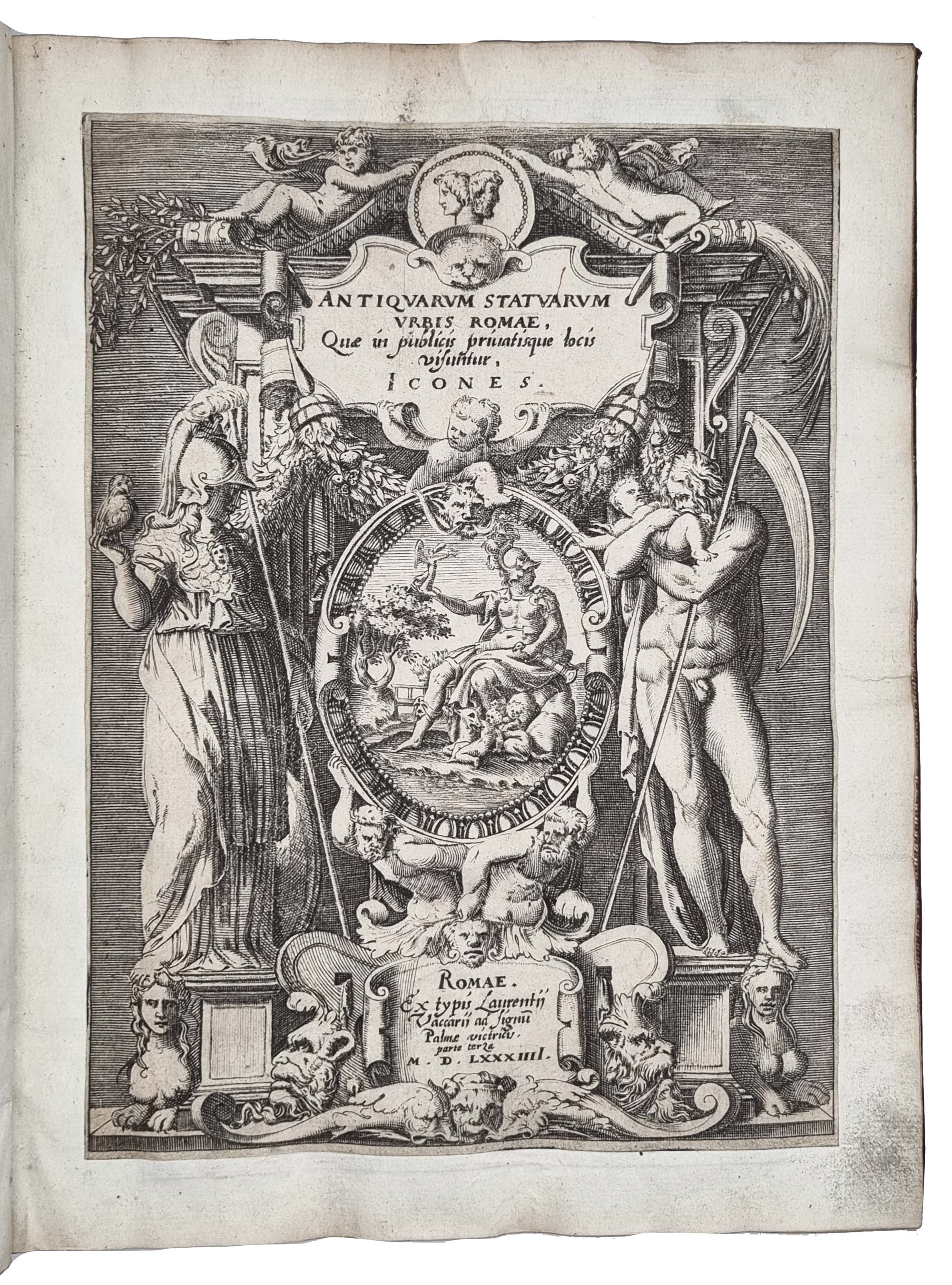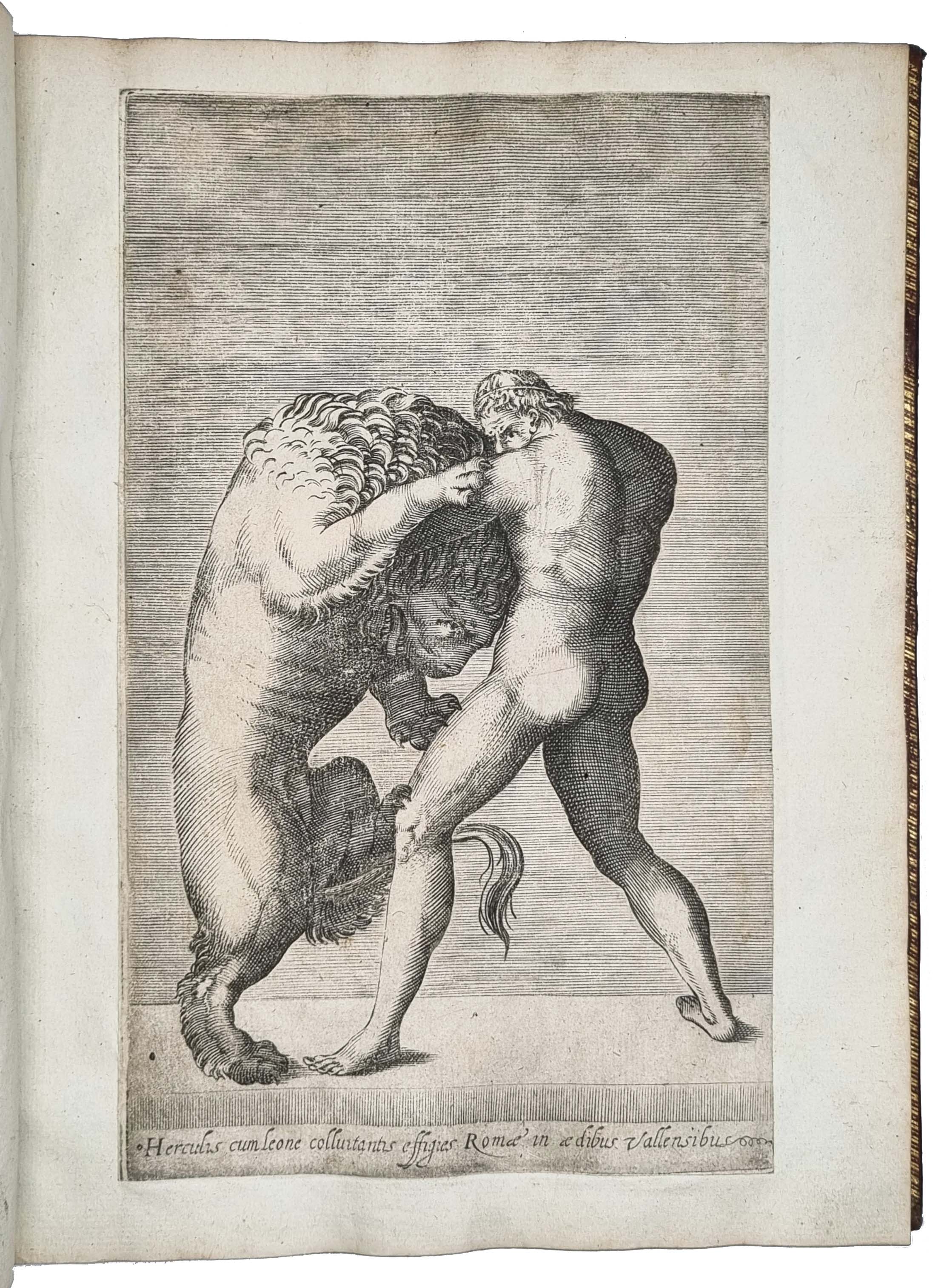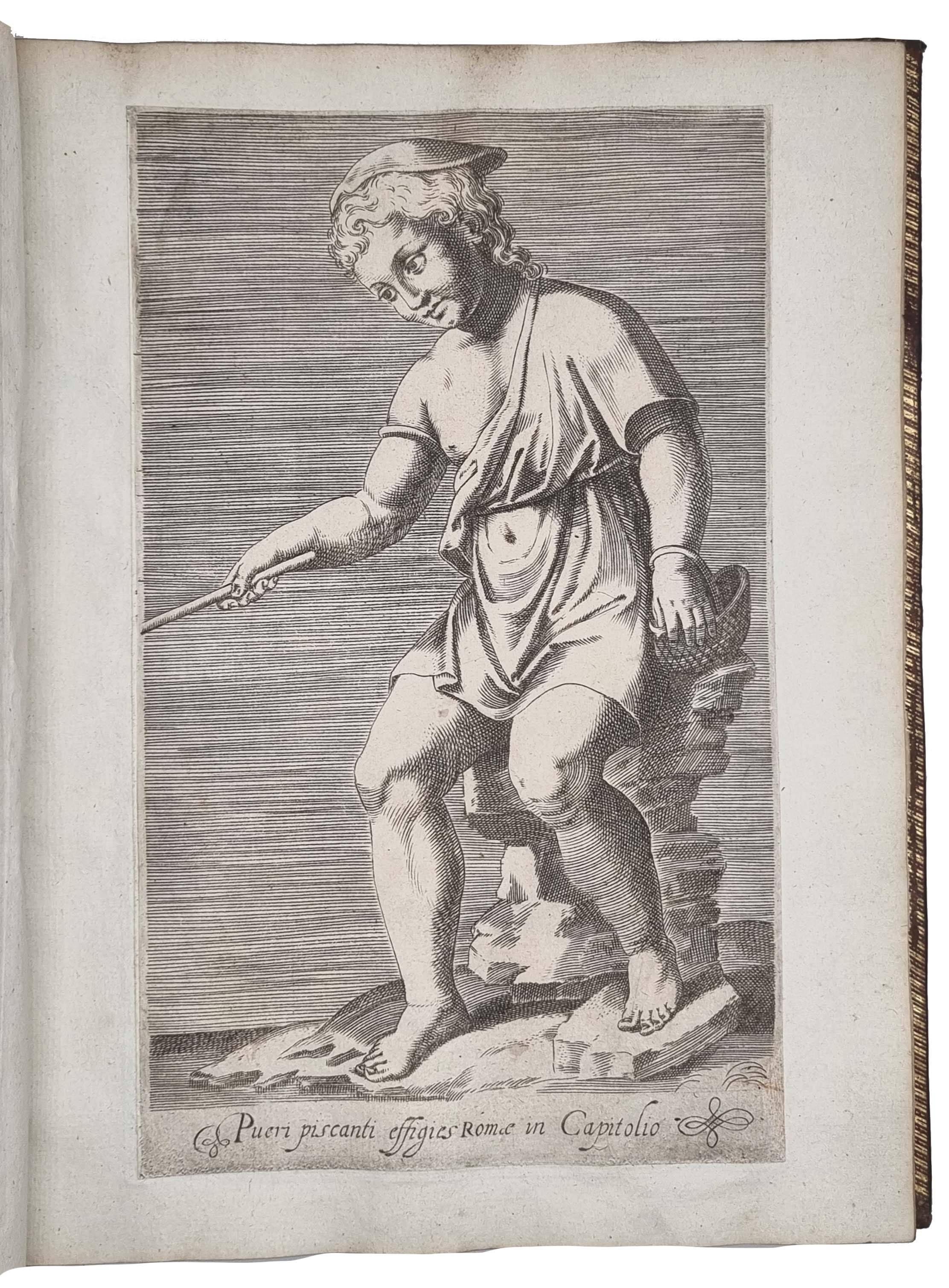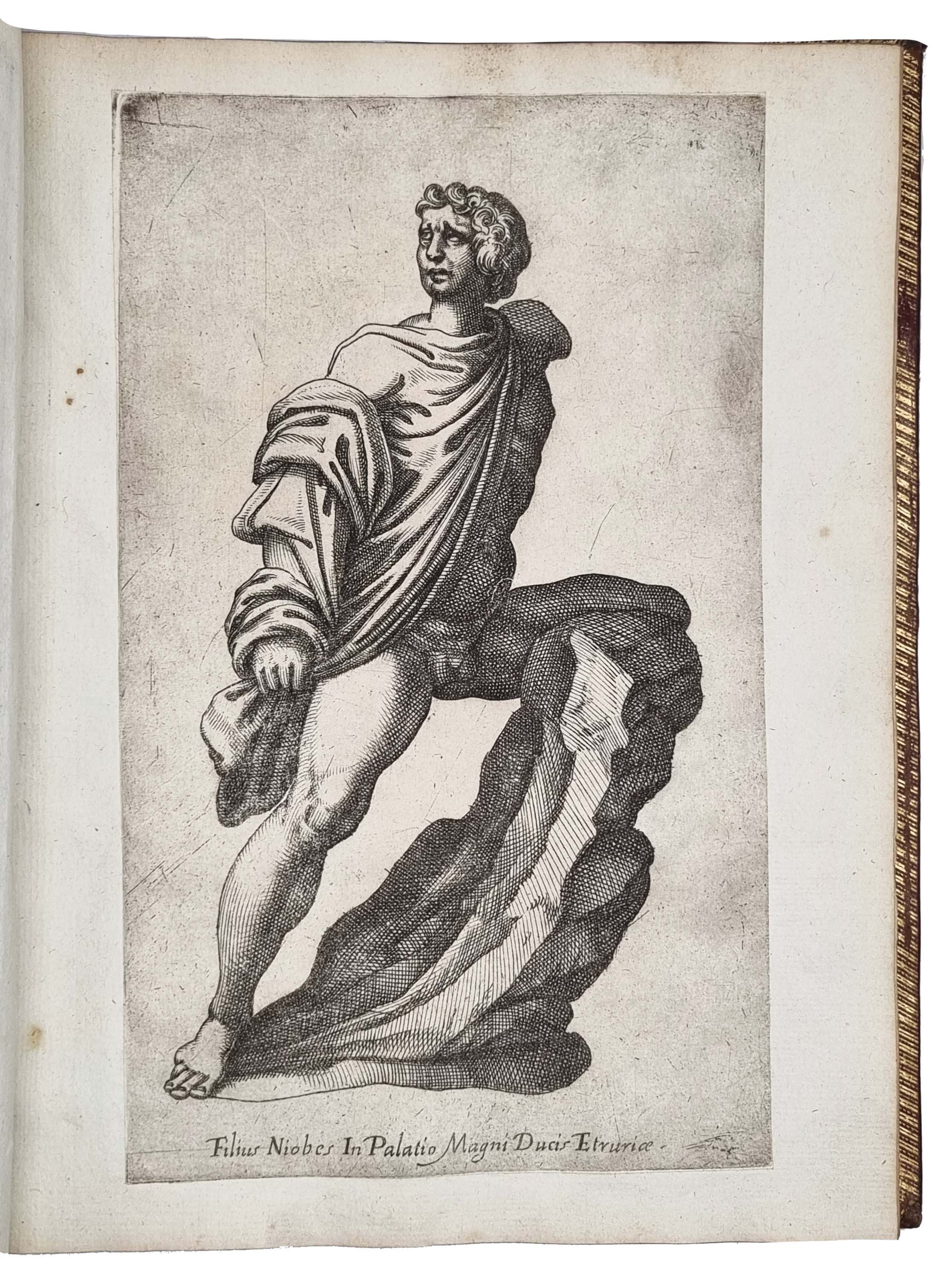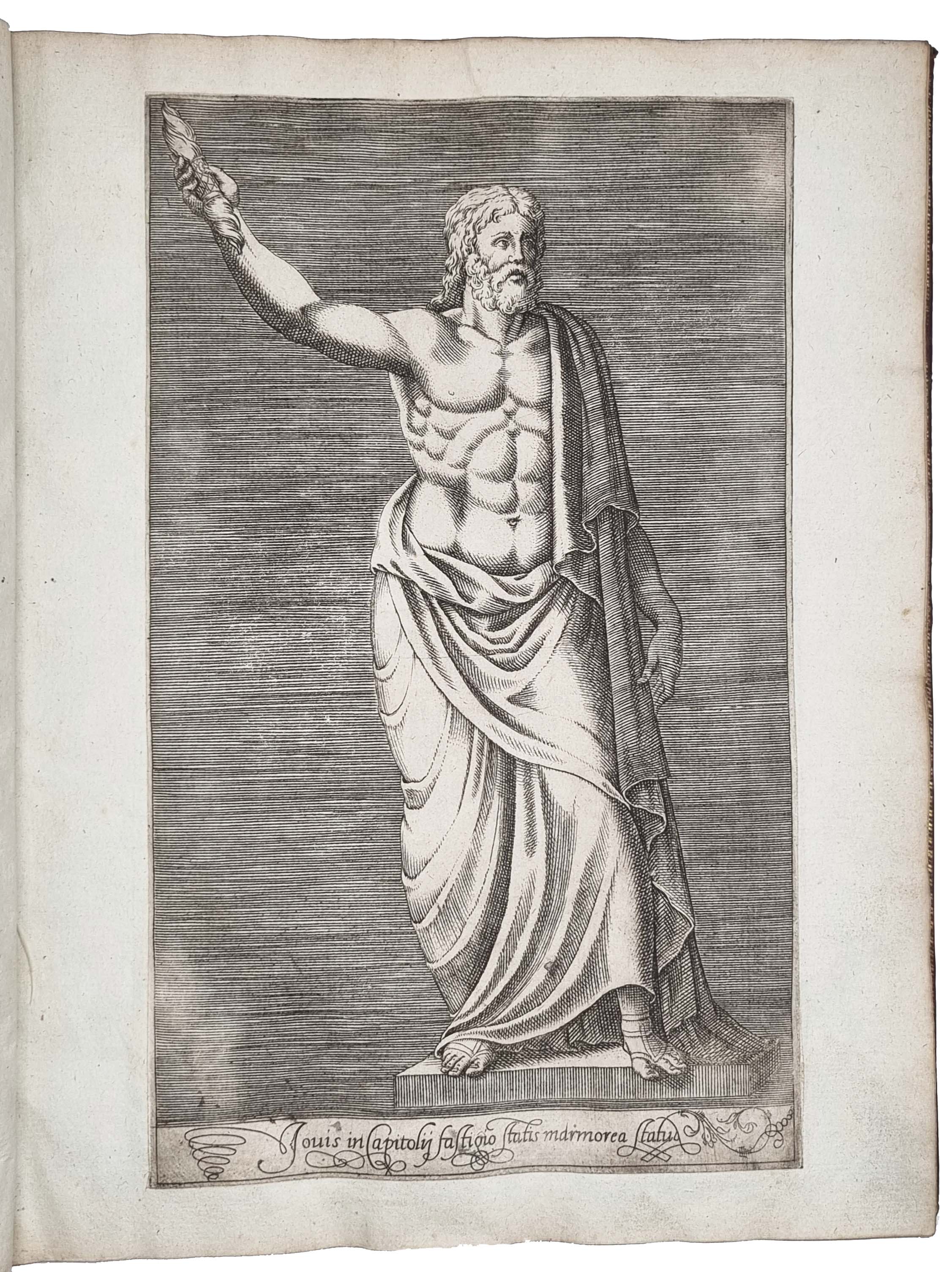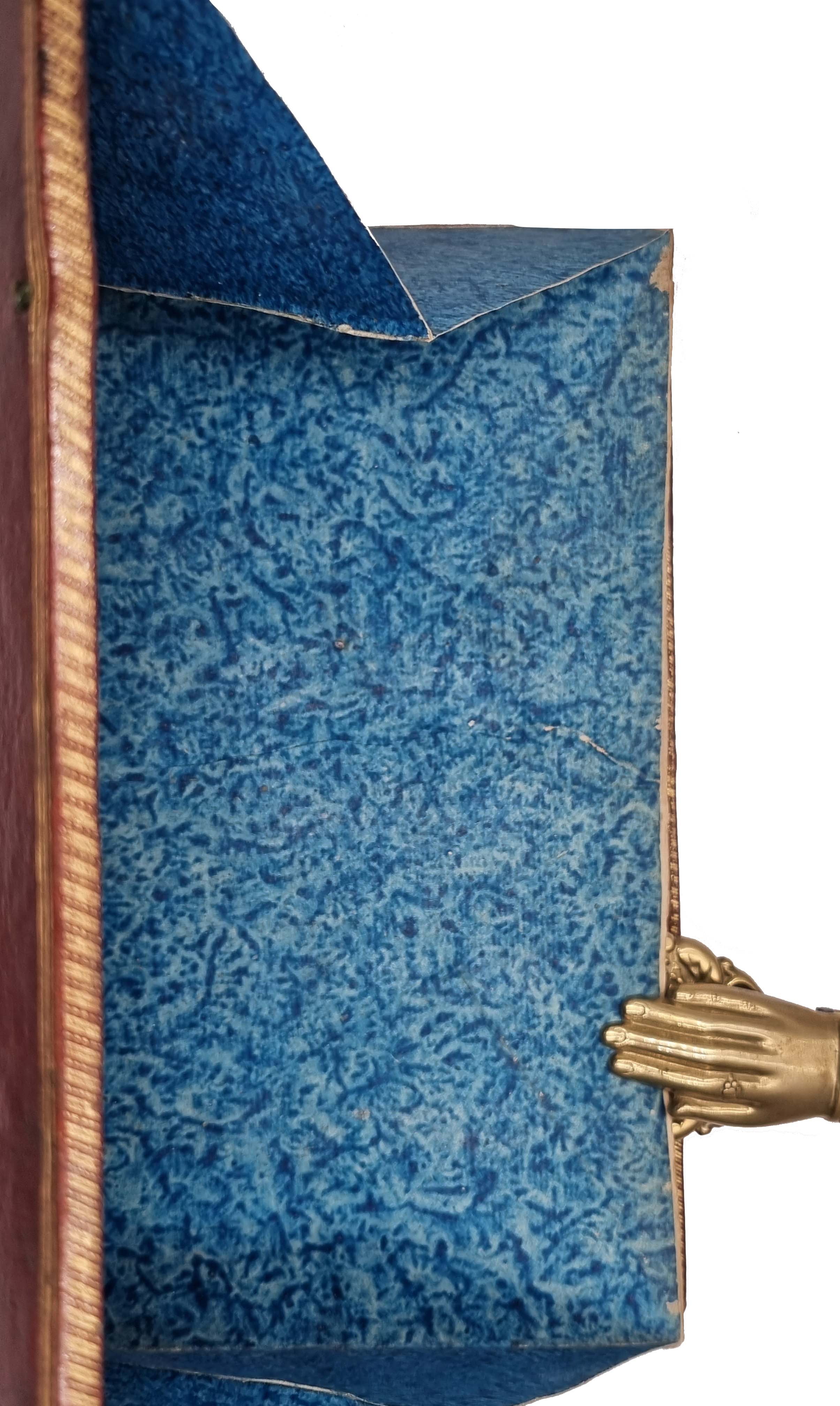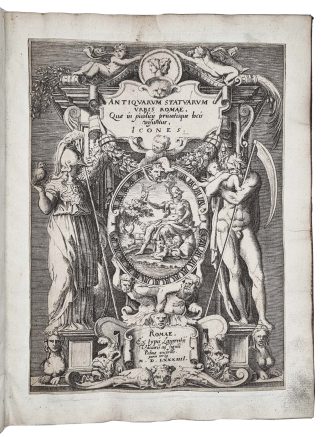ANTIQUARUM STATUARUM URBIS ROMAE
BESPOKE CONNOISSEUR’S BINDING
Antiquarum Statuarum Urbis Romae quae in publicis privatisque locis visuntur, Icones. Terza Parte.
Rome, Lorenzo Vaccari, 1584£4,250.00
4to. Fine engraved architectural title and 72 engraved plates of Roman statuary, all mounted, followed by a hundred or so blank leaves, C18th engraved bookplate of J.M. Tourret on verso of front fly. Small oil stain to lower outer corner of last three blank leaves. A fine copy of this suite of engravings all in very good impression, in beautiful C18th red morocco by the MM atelier, covers bordered with a triple gilt rule, large fleurons gilt to corners, green morocco inlay on upper cover bordered with gilt rolls and title gilt, spine double gilt ruled in compartments, large flower gilt at centres with semée of small tools gilt, green morocco title label, edges gilt rolled, two large wallets fashioned of blue painted paper on front and rear pastedowns, a.e.g.
A lovely copy of this suite of prints in a beautiful, most unusual and ingenious binding by the M.M. atelier in Paris, incorporating two large wallets to store drawings or prints. The binding was undoubtedly made with the idea in mind that a collector, perhaps on a grand tour of Italy, could use the wallets to store the engravings or drawings he found on his travels, to perhaps paste them into the blank leaves at a later date, or to make notes or drawings directly on these leaves. We have found other books with J M Tourret’s label but nothing about his life, or his collection. The book is a most ingenious design, beautifully bound, a wonderful object, that gives an insight into collecting on the grand tour.
The binding can be attributed to the ‘MM’ binder; the corner-piece tool on the covers corresponds exactly with that identified as tool ‘MM6’ in cyclopedia.org. These bindings “range from 1770 to at least 1786. .. This able binder appears to be a master of the classic dentelles of the 60’s and may have apprenticed with a famous royal binder from that period. At the same time he uses tools in the same fashion as Jubert in the mid 80’s. It would not surprise me if these two binders were about the same age and apprenticed with Derome, Douceur or Dubuisson. Unlike the work of Jubert we do not see the inclusion of any Derome tools or fers à l’oiseau in the decoration of these bindings. From the very first examples we see bindings of a very important and high standing. A 1776 Royal Almanach with the arms of Louis XVI. Somehow I doubt whether one goes from apprenticeship to royal bindings all that quickly. .. Also note Douceur’s influence in the tools, flowers and floral motifs dominant.” cyclopedia.org
The fine set of Prints are by the publisher printmaker Giovanni Battista de’ Cavalieri “Engraver, printer and print publisher, from Villa Lagarina near Trento. Active in Venice and from 1559 in Rome. In 1577 he had a bottega in Parione which he let out to a cartolaio, Girolamo Agnelli. His own house was in the vicolo di Palazzo Savelli, with a workshop next to it. He was the brother-in-law of Lorenzo Vaccari. .. By 1560 he seems to have been publishing his own plates. He entered into partnerships for publishing: in 1567 with Perino Zecchini de Guarlottis ..and in 1576 with Lorenzo Vaccari. In 1577 he was employing a printer: Francesco Cornuti. He acquired old plates that he recut. He published plates by his contemporaries, including Cort. He himself engraved after works of many artists, including Francesco Salviati, Daniele da Volterra, Raphael, Michelangelo, Polidoro da Caravaggio, Livio Agresti and Baccio Bandinelli. He also made copies of earlier prints. His subject matter included the devotional, topographical, antiquarian, didactic and ‘popular’. He published a number of important series: the ‘Pontificum Romanorum Effigies’ of 1580 and the ‘Romanorum Imperatorum Effigies’ of 1583; the ‘Ecclesiae Militantis Triumphi’ of 1583 and the ‘Ecclesiae Anglicanae Trophaea’ of 1584; the ‘Antiquarum Statuarum Urbis Romae’, the first book of which was first published before 1561/2 (Book 1 and 2 together, before 1584; Books 3 and 4 in 1594).” M. Bury, ‘The Print in Italy 1550-1625’, British Museum. Brunet states that there is a copy of this set at the Bibliotheque Imperiale that contains 82 engravings though also states that sets generally vary largely in the number of plates included. He concludes “Au reste, il est difficile de dire rien de bien exact sur le nombre et l’ordre de ces planches qui ont été publiées à plusieurs reprises sans numérotage et sans table” (Brunet).
Brunet, I, 320. Graesse, I, 149. Rossetti 1749; Edit 16 CNCE 1991. Adams C1179 Cicognara 3492; Olschki Choix 16668 (pts. I and II only). Not in BM STC It., or Mortimer Harvard C16.In stock


